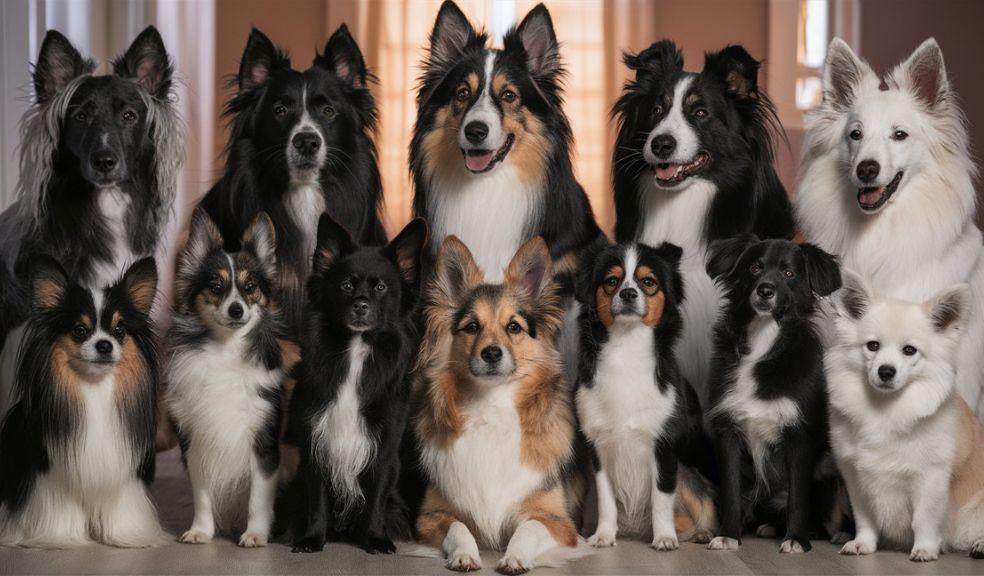
Discover the World's Most Rare and Beautiful Dog Breeds
The world of dogs is incredibly diverse, with hundreds of recognized breeds showcasing a wide array of sizes, appearances, and personalities. While some breeds, like Labrador Retrievers and Golden Retrievers, are beloved pets the world over, many canine companions remain hidden gems, their numbers few and their unique traits relatively unknown. In this article, we'll delve into the realm of rare dog breeds, exploring their histories, characteristics, and why they hold a special place in the hearts of dog enthusiasts.
What Makes a Dog Breed Rare?
Several factors contribute to a dog breed's rarity. Here are some of the most common reasons:
- Small Population Size: Some breeds simply have a limited number of members worldwide. This might be due to a recent origin, a decline in popularity over time, or challenges in the breeding process.
- Geographic Isolation: Certain breeds might only be found in specific regions of the world, often their place of origin. This can limit their exposure and make it harder for them to spread globally.
- Historical Use: Many dog breeds were developed for specific purposes, such as hunting, herding, or guarding. If those tasks decline in demand, the associated breeds often diminish in number.
- Breeding Preferences: Trends in dog breeding change over time. Breeds not actively promoted or in the spotlight might fall into obscurity, leading to fewer breeders and lower popularity.
The Allure of Rare Breeds
There's a certain mystique surrounding rare dog breeds. For some, these dogs represent a piece of living history, a connection to ancient lineages and traditional canine purposes. Others appreciate their unique appearances and temperaments, offering a refreshing departure from commonly encountered breeds. Of course, the simple fact of their rarity adds appeal—knowing you own a special and unusual pet can be a point of pride.
Fascinating Examples of Rare Dog Breeds
Let's take a closer look at some incredibly rare dog breeds that might surprise and fascinate you:
- Norwegian Lundehund: This small, agile spitz-type breed hails from Norway. It possesses some truly remarkable physical traits, including six toes on each foot and incredibly flexible joints allowing it to squeeze into tight passages. Historically, Lundehunds were used to hunt puffins along the cliffs of Norway.
- Stabyhoun: Originating in the Netherlands, the Stabyhoun is a medium-sized sporting dog with a gentle and patient nature. They're skilled in various activities, from retrieving to vermin control. These versatile pups are known for their beautiful, long coats.
- Mudi: Hailing from Hungary, the Mudi is an energetic and highly intelligent herding breed. Their distinctive appearance includes curly coats and stand-up ears. Mudi are incredibly athletic and excel in dog sports like agility and flyball.
- Azawakh: This strikingly elegant sighthound originates from West Africa. Tall, lean, and with a distinctive short coat, Azawakhs were traditionally used by nomadic tribes for hunting and protection. They are fiercely loyal to their families and possess an independent streak.
- Catahoula Leopard Dog: This breed's history lies in the southern United States, where they were valued as versatile herding and hunting dogs. They're perhaps most easily recognized by their striking spotted coats, which come in an array of colors.
- Otterhound: Native to the United Kingdom, the Otterhound is a large, scenthound breed with a shaggy coat and a boisterous personality. As their name suggests, these dogs were historically used to hunt otters. With otter hunting now banned in the UK, their numbers have dwindled significantly.
Important Considerations Before Choosing a Rare Breed
While undeniably charming, rare dog breeds might not be suitable for every dog owner. Here are some factors to consider:
- Availability: Finding a reputable breeder of a rare breed can be challenging. You might need to travel long distances, join a waiting list, or even import a puppy from overseas.
- Temperament: Many rare breeds were developed for specific tasks. Research their typical temperament to ensure it aligns with your lifestyle. Some breeds may have high exercise needs, strong guarding instincts, or require extensive training.
- Health: Some breed populations might have small gene pools, increasing the risk of inherited health conditions. Do thorough research on a breed's health problems and seek a breeder that prioritizes genetic testing.
- Responsibility: When you own a rare breed, you become an ambassador for that breed. Educate yourself thoroughly and be prepared to answer questions and spread accurate information.
Conclusion
The rarity of these breeds makes them all the more special. If you're seeking a unique and devoted canine companion, consider opening your heart and home to one of these extraordinary dogs. Remember, extensive research, commitment, and a willingness to seek out reputable breeders are key to responsible ownership of any rare breed.
FAQs
-
Are rare dog breeds more expensive? Yes, due to their limited availability and sometimes specialized breeding requirements, rare dog breeds often come with a higher price tag.
-
Do rare dog breeds have more health problems? Some rare breeds might be predisposed to specific health issues due to a smaller gene pool. Careful research and selecting a breeder who prioritizes health testing is crucial.
-
Where can I find a rare dog breed? Start by researching breed organizations or breed-specific rescue groups. You might have to expand your search beyond your local area and be prepared for a waitlist.
-
Are rare breeds more difficult to train? This depends on the individual breed. Some rare breeds retain strong working instincts and might need more experienced owners. Understanding their breed history and temperament can help you tailor your training.








